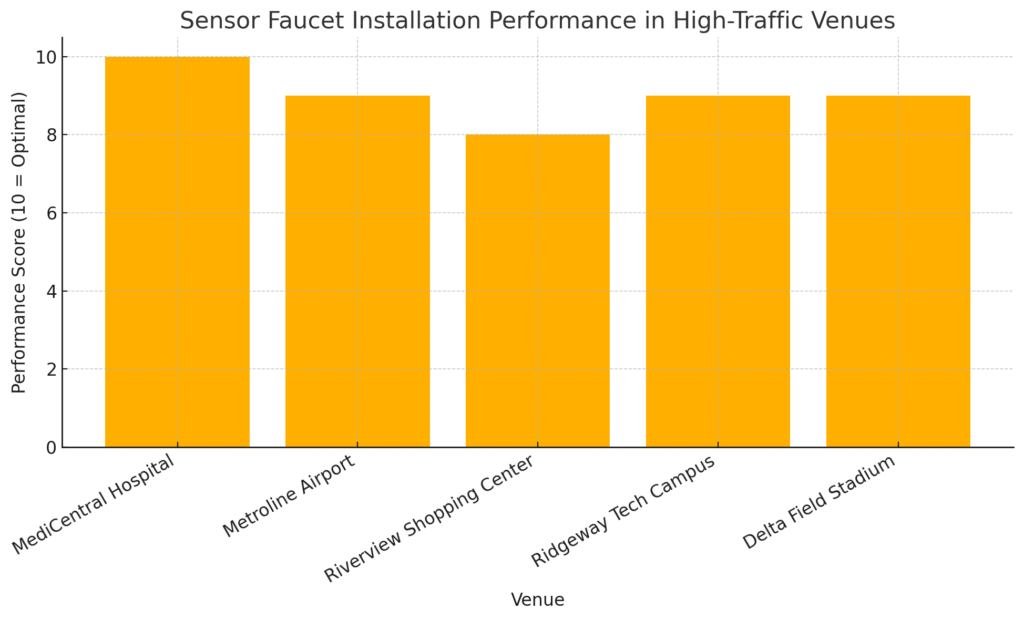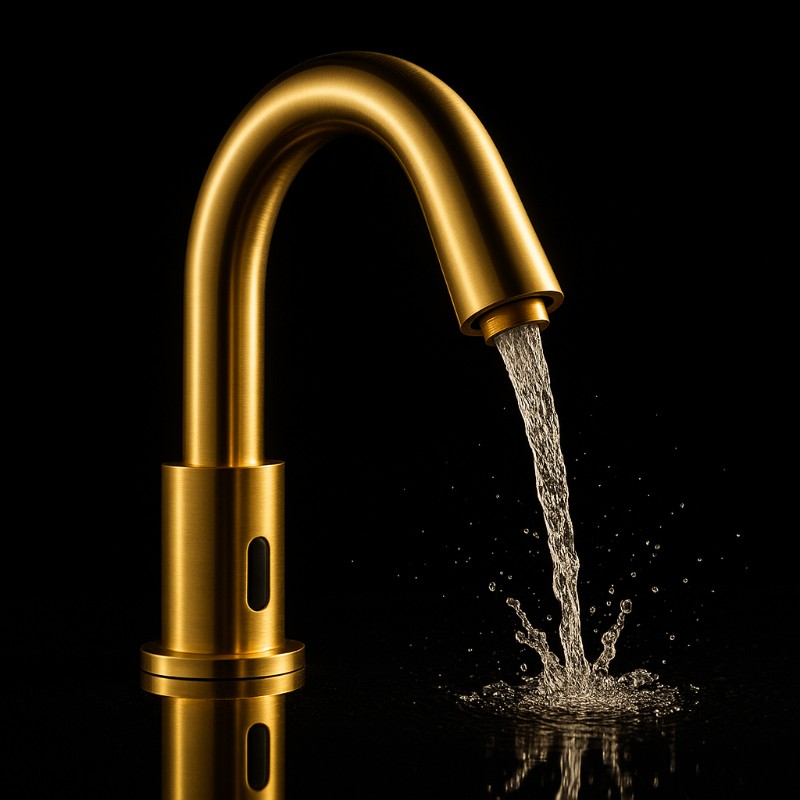Form • Performance • Durability • Cleanliness
In the commercial design world, form, performance, durability, and cleanliness have to go together particularly in high-traffic public restrooms. Airports, stadiums, hospitals, malls, and universities see constant day-in-day-out usage, applying tremendous stress to restroom hardware. Sensor faucets, previously thought of as luxury indulgences, are now a default necessity because of their hands-free cleanliness, water conservation, and low touchpoint profiles.
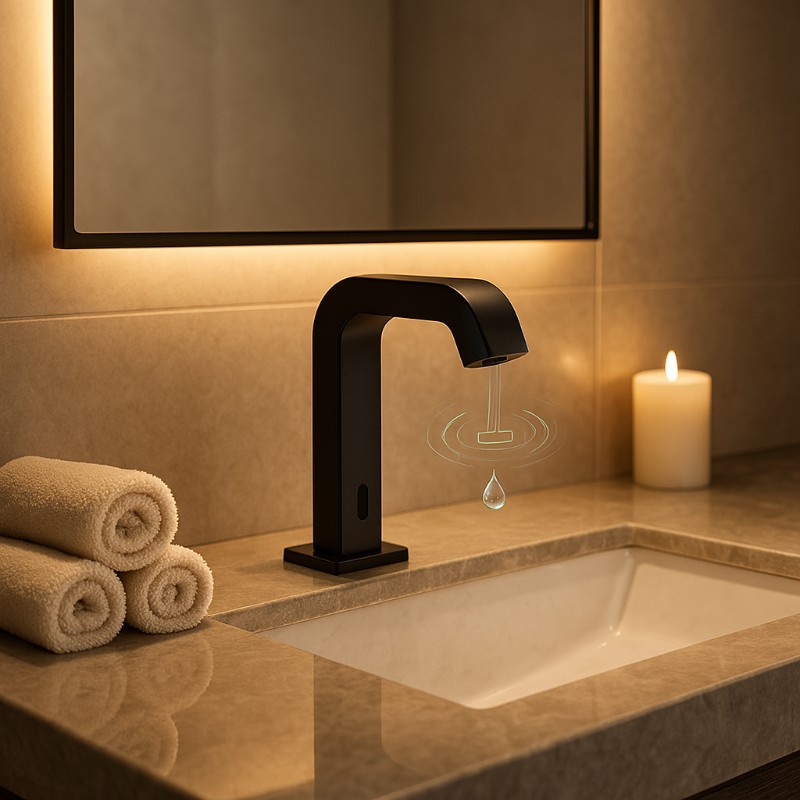
Source reference
At FontanaShowvers, a premier provider of commercial bathroom technology, more than a decade of installing sensor faucets in high-traffic establishments has provided a rich source of experience. This blog distills 10+ actual projects’ lessons and how careful planning, product choice, and professional installation can make the difference between smooth operation and expensive retrofits.
1. Knowing the Venue is Step One
No two projects are alike. A hospital restroom requirement is vastly different from a sports venue. Lesson number one, the critical first lesson: context determines configuration.
In healthcare facilities such as the MediCentral Hospital Project, Fontana’s engineers wanted antimicrobial finishes, battery-powered power supply for blackout capability, and extended activation time to support surgical scrubs. Conversely, at the Delta Field Stadium, faucet activation needed to be immediate and short, designed for velocity and durability with halftime rushes.
Pro Tip: Do a use-case review. Who uses it? How many an hour? What hygiene risk is involved? Adjust sensor sensitivity, flow rate, and activation range according.
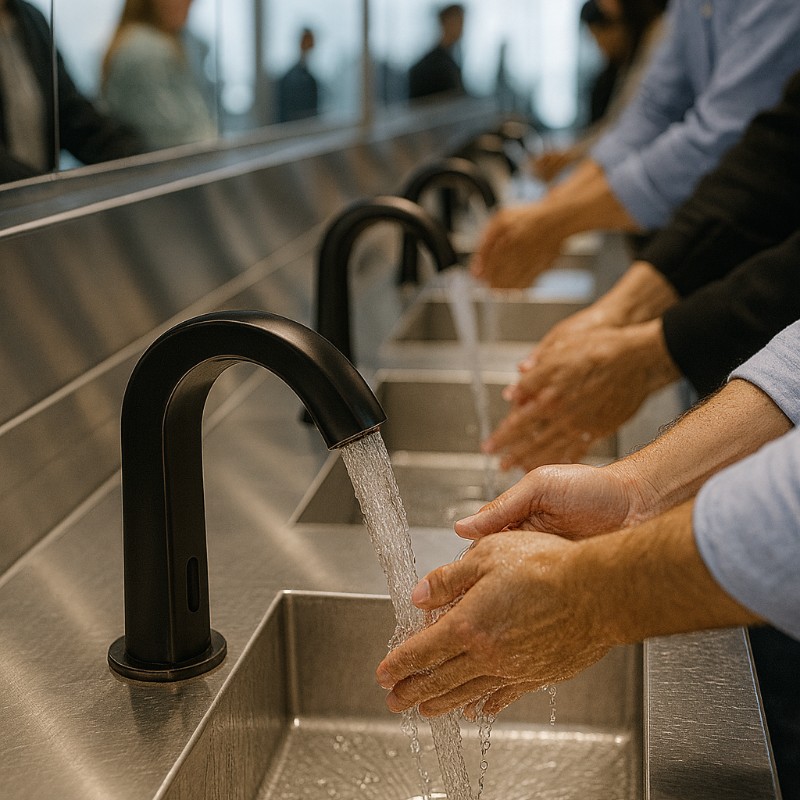
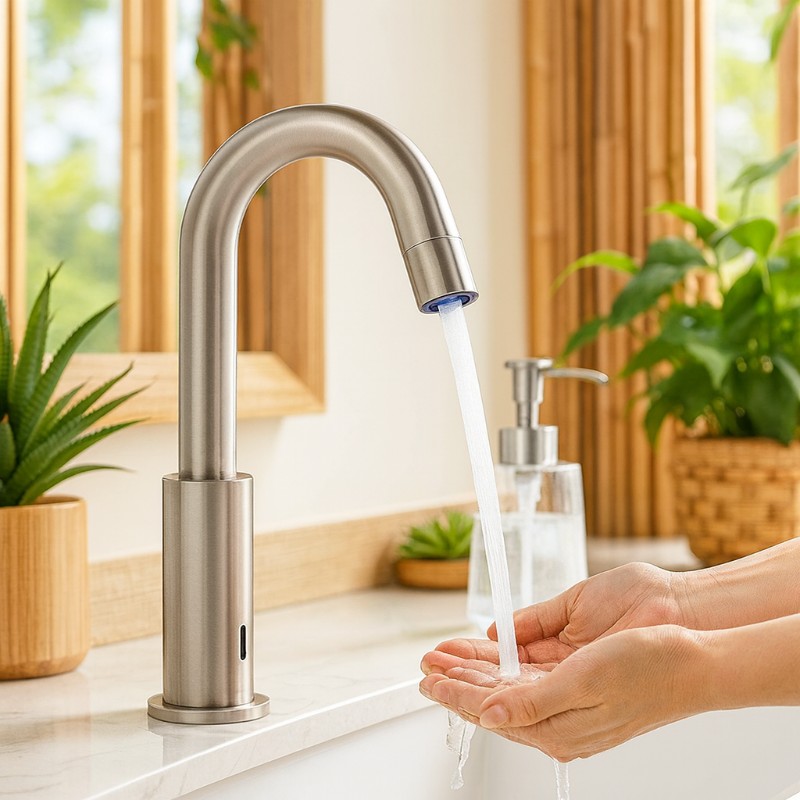
2. Go Tough on Durability Not Just Looks
One of the most prevalent errors among specifiers is specifying sensor faucets based on sleek looks without heeding the abuse they will receive in public use. Fontana’s experience within transit terminals such as Metroline Airport indicated that chrome-plated plastic parts frequently couldn’t last more than one year through continuous usage.
Fontana’s solution? Solid brass construction, vandal-resistant aerators, and tamper-proof infrared sensors features that were essential in keeping the Capital Bus Terminal faucet system running maintenance-free for more than three years.
Key Takeaway: Always choose commercial-grade sensor faucets. Residential versions won’t withstand commercial pressure, even if the specs appear the same at first.
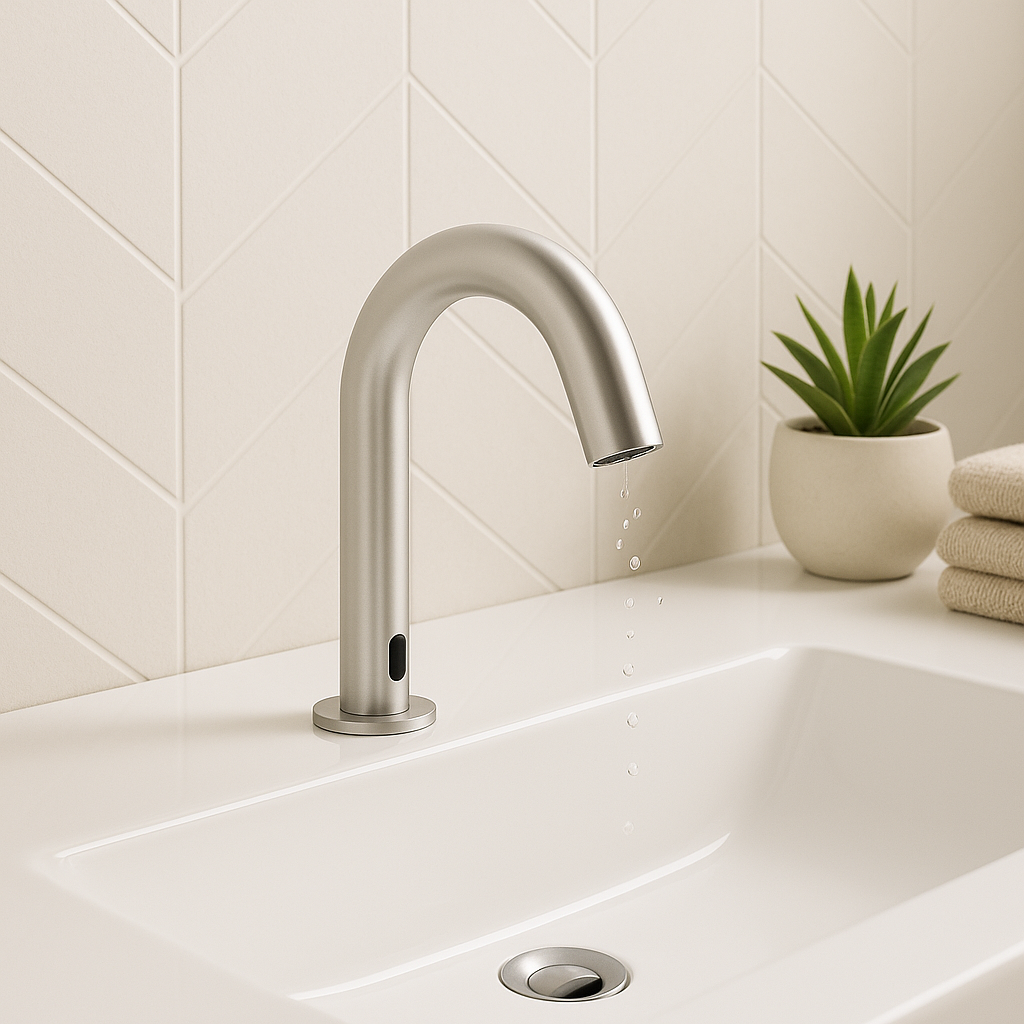
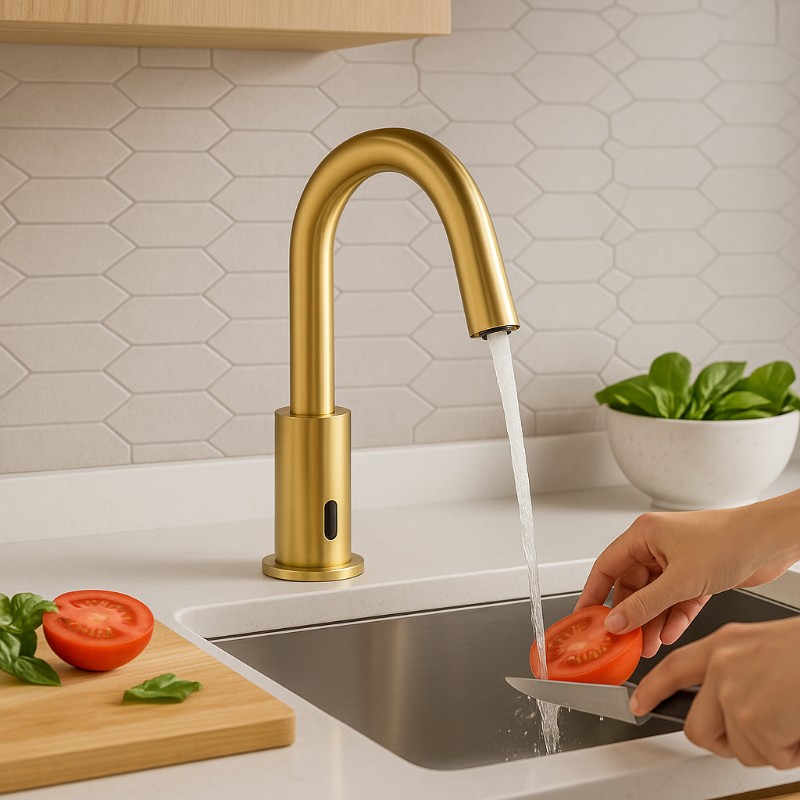
3. Streamline Maintenance and Access
When a sensor faucet malfunctions in a public restroom, it’s not only inconvenient—it can shut down operations. From Fontana’s experience throughout malls and hospitality facilities such as the Riverview Shopping Center, it became apparent that access behind walls or too much complicated technology means lost time and increased expense.
Fontana currently suggests models that feature:
- Easy-to-reach solenoid valves
- Stock AA battery packs (where applicable)
- LED indicators on battery and sensor status
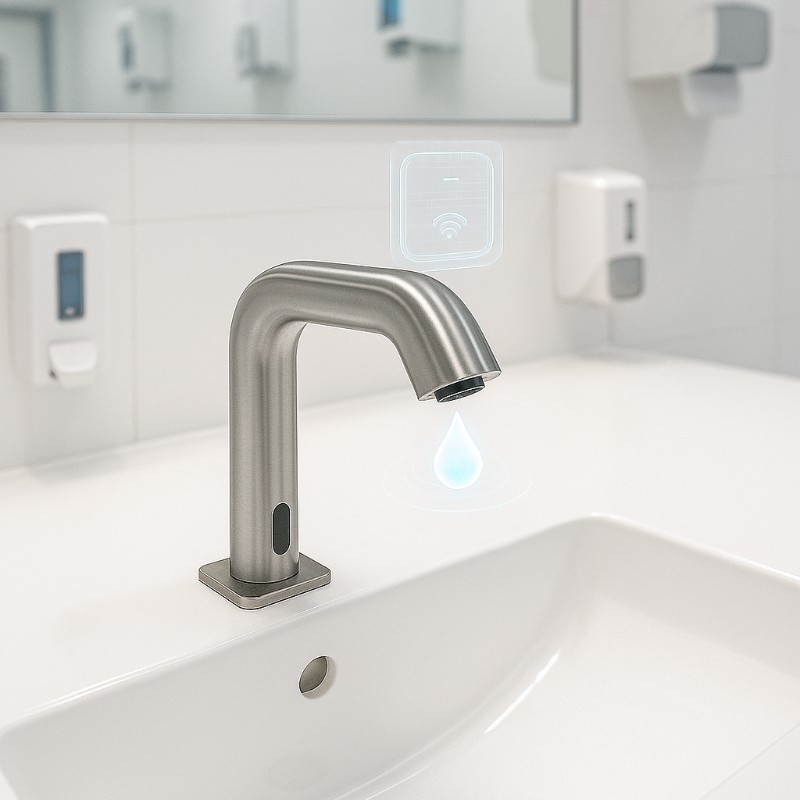
By doing this, the company reduced emergency maintenance calls by almost 60% within one year at Greenhaven Convention Center, where facility janitorial workers could correct problems without calling in an expert.
4. Plumbing Infrastructure: Don’t Skip the Evaluation
In most retrofits, sensor faucet problems have nothing to do with the faucet itself but with old or incompatible plumbing. In an older building, the Grand Central Library, water pressure variation created erratic faucet performance until the plumbing lines were redistributed.
Fontana staff now consistently recommend that clients have plumbing compatibility checked prior to installation. This involves verifying:
- Stable incoming pressure (min. 0.5–1.0 GPM recommended)
- Filtration systems to prevent sensor clogging
- Hot and cold mixing valves where necessary
- Lesson Learned: Budget not only for faucets, but also for supporting plumbing upgrades.
5. Power Source Planning is Important
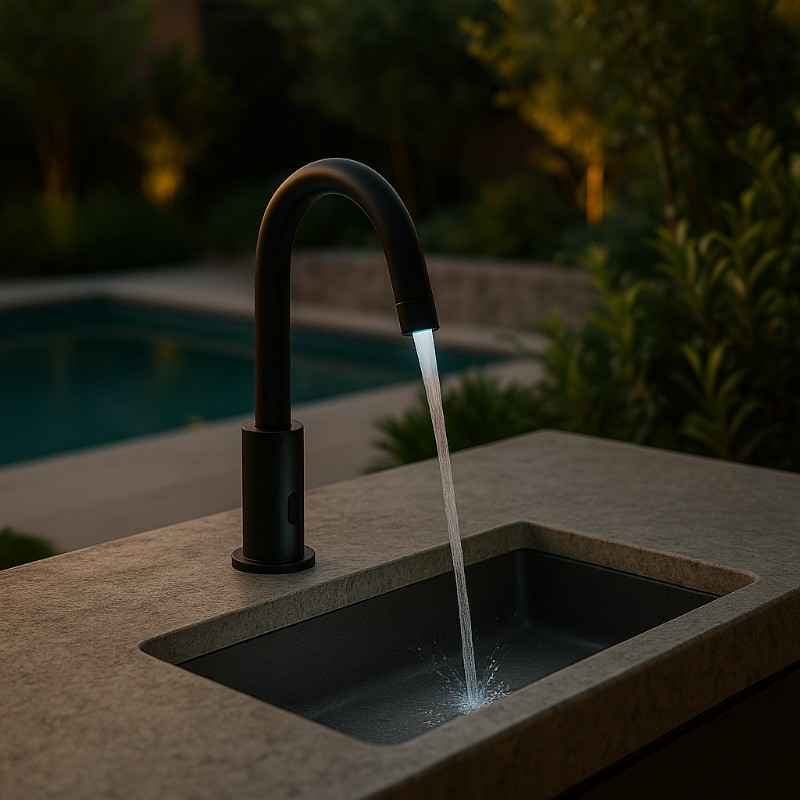
Certain facilities, such as the North River Correctional Facility, experienced unreliable power feeds. Where this was the case, Fontana used battery-powered sensor faucets with high-capacity lithium cells and optional solar panels. For new builds such as the Ridgeway Tech Campus, hardwiring with concealed AC adaptors provided constant uptime.
Fontana’s Power Guidance:
- Utilize hardwired models for new builds or extensive remodels
- Apply battery-powered (or hybrid) models in retrofits or in areas where electrical is restricted
- Never install dual power sources within the same restroom zone—this provides troubleshoot horror
6. User Experience: Less Is More
The Skylight Airport mounted ultra-sensitive sensors that reacted to movement from afar—causing unwanted triggering and water loss. With adjustments, Fontana calibrated the range to 4–6 inches, cutting false triggering by 70%.
Best Practice: Set default to reasonable sensitivity and 1-second delay for triggering. Users anticipate no-surprise, predictable performance.
7. Case Study Summary: Fontana Success Stories
| Venue | Key Feature | Outcome |
|---|---|---|
| MediCentral Hospital | Battery + Antimicrobial | 100% uptime during blackouts |
| Metroline Airport | Vandal-proof brass build | 3+ years of zero maintenance |
| Riverview Shopping Center | Accessible battery box | 60% fewer maintenance calls |
| Ridgeway Tech Campus | Hardwired install | Smooth integration with BMS |
| Delta Field Stadium | Fast activation | 15,000 users/day handled smoothly |
Conclusion: Accuracy, Not Blind Guesswork
The installation of sensor faucets in high-traffic facilities is not a plug-and-play process. It calls for cooperation among architects, plumbing engineers, and facility managers, and a product partner such as Fontana that knows the subtleties of hardware used in commercial applications.
From plumbing compatibility to user ergonomics, power supply to vandal resistance, every project teaches its own lessons. What differentiates successful installations is a willingness to customize—not compromise.
Considering upgrading your commercial restroom? Learn from the experts and make every drop count with Fontana.
